Full Review
Get up to 10% Off Gravel with our Deals Vault • Join Pack Hacker Pro.
We’ve had our fair share of massive travel backpacks here at Pack Hacker, with the average behemoth coming in at 40-something liters. For context, typical daypacks range from anything between 10 and 25 liters, and slings come in somewhere in the single digits. In short, travel backpacks are nothing to scoff at when it comes to lugging clothes around. However, the subject of this review is so massive, rather than a total capacity or even simply calling it a travel backpack, they’re also calling it a “system”—and that’s how you know they mean business.


Is it a travel backpack? Is it a daypack? Is it a sling? Yes! It’s all of those things because together, they form Gravel’s Backpack Travel System. Composed of the 42L Carry-On Travel Backpack, 11L Travel Day Bag, and 2L Sling Belt, this is one of, if not the most, comprehensive packages to slide across our desks. In fact, our camera ran out of storage space not once, but twice trying to document all of the features across all three bags. The 11-liter Travel Day Bag alone has four modes of carrying, and the 42L Carry-On Travel Backpack is a nexus of straps, pockets, and organization.
This is definitely one of those cases where sheer quantity appears to overcome any deficiencies in quality. That’s one of the key things we look at in this review: Does the Gravel Backpack Travel System work like a well-oiled machine? Or is it too clunky and complicated? Let’s get into it.
Materials & Aesthetic
We’ll start with the basics. The 42L Carry-On Travel Backpack and 11L Travel Day Bag are near-perfect clones of each other, with minimal differences from the outside. Gravel’s choice of a rectangular design is more of a practical choice rather than an aesthetic one, as you’ll see later on. We feel fairly neutral about the design, or if anything, leaning more towards viewing it as respectable rather than eye-catching.
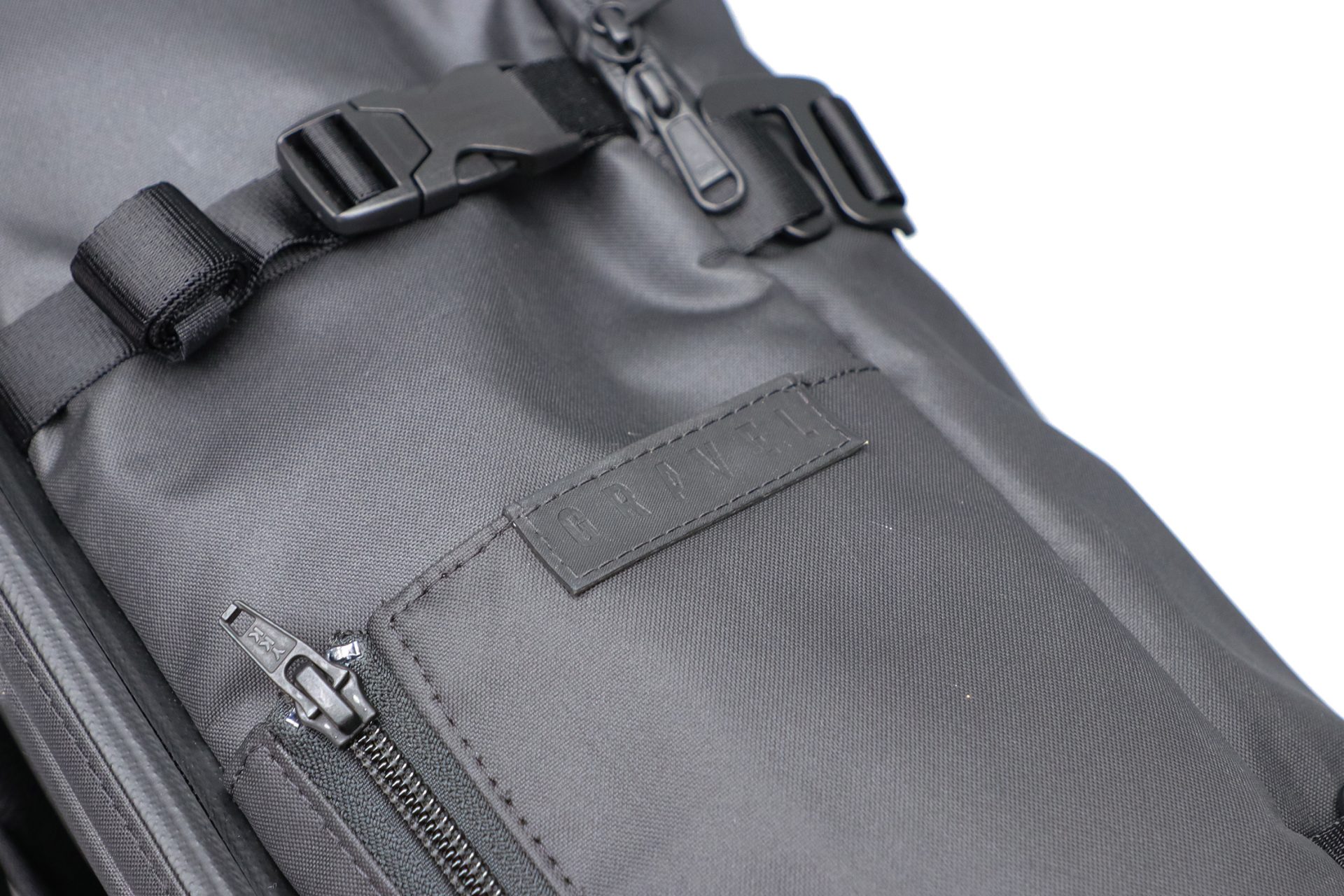

That said, having the large Carry-On on our back makes us feel like an astronaut carrying a life support system. Not that the rectangular shape doesn’t have its own appeal. We were particularly fond of the moon landing-themed Aer Lunar Pack, which we’ve also taken a look at. In a somewhat funny twist, we think the Carry-On is more on point as a PLSS (Portable Life Support System) replica due to its sheer size and more rectangular shape compared to the Lunar Pack. Well, the journey might as well be interstellar, considering how much this system is packing.
The Sling Belt has an interesting design in and of itself. In sling or waist pack mode, it takes the form of a butterfly that’s straight out from the pages of a science fiction novel. The two halves—wings, if you will—are joined together via a zipper in the middle. Butterfly or not, however, the sling’s overall flat and slim profile gives it a hint of urban sleekness.
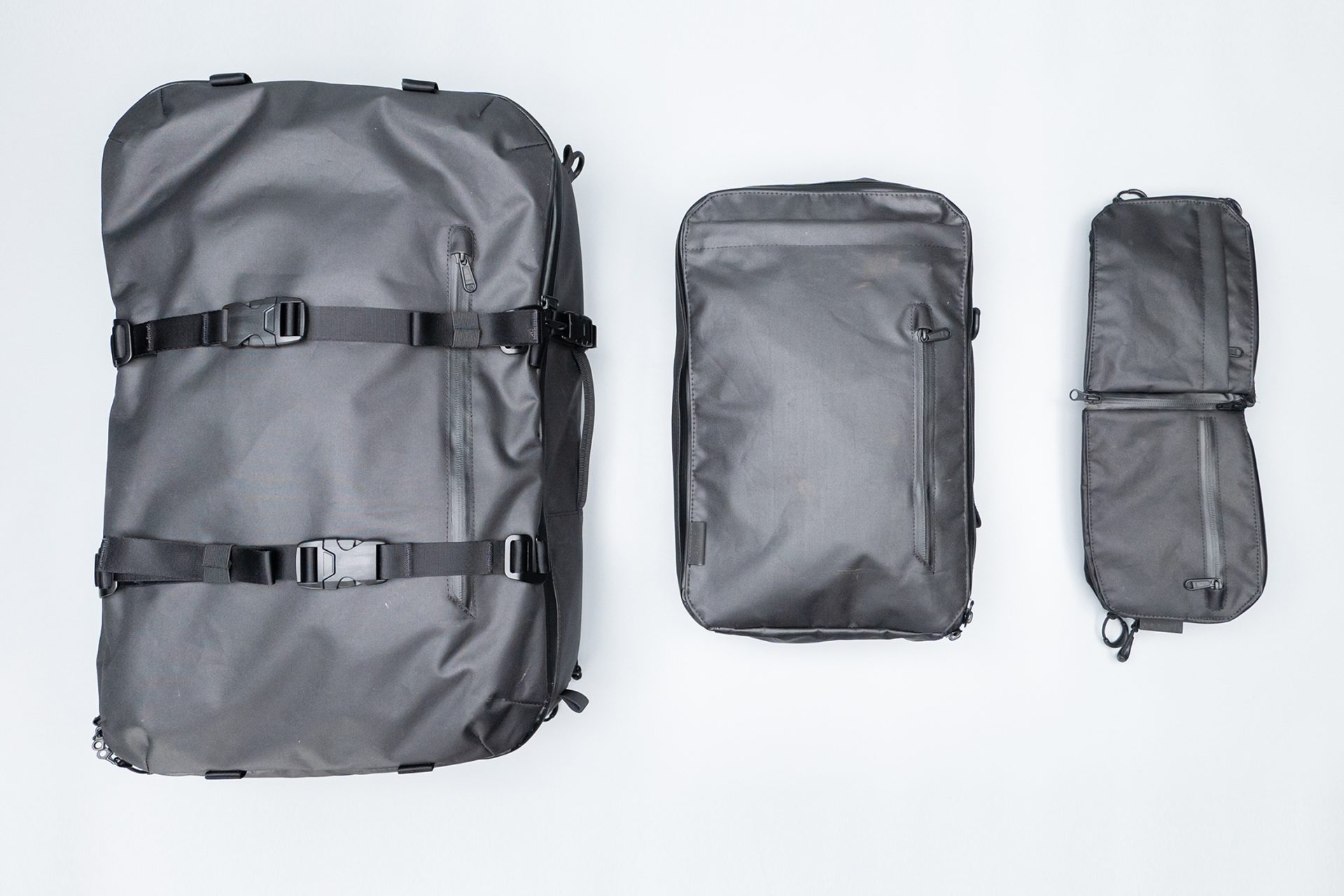

However, all of this is for naught if there’s no substance beneath the looks. Fortunately, the Backpack Travel System has that in spades. The outer fabric shell is a 300D Polyester with TPO coating that helps keep it fairly weather resistant. For hardware, Gravel has gone full YKKs from the zippers and all the way down to the buckles. As massive and intricate as this whole system is, we have yet to find a loose thread, scratch, or malfunctioning zipper.
External Components
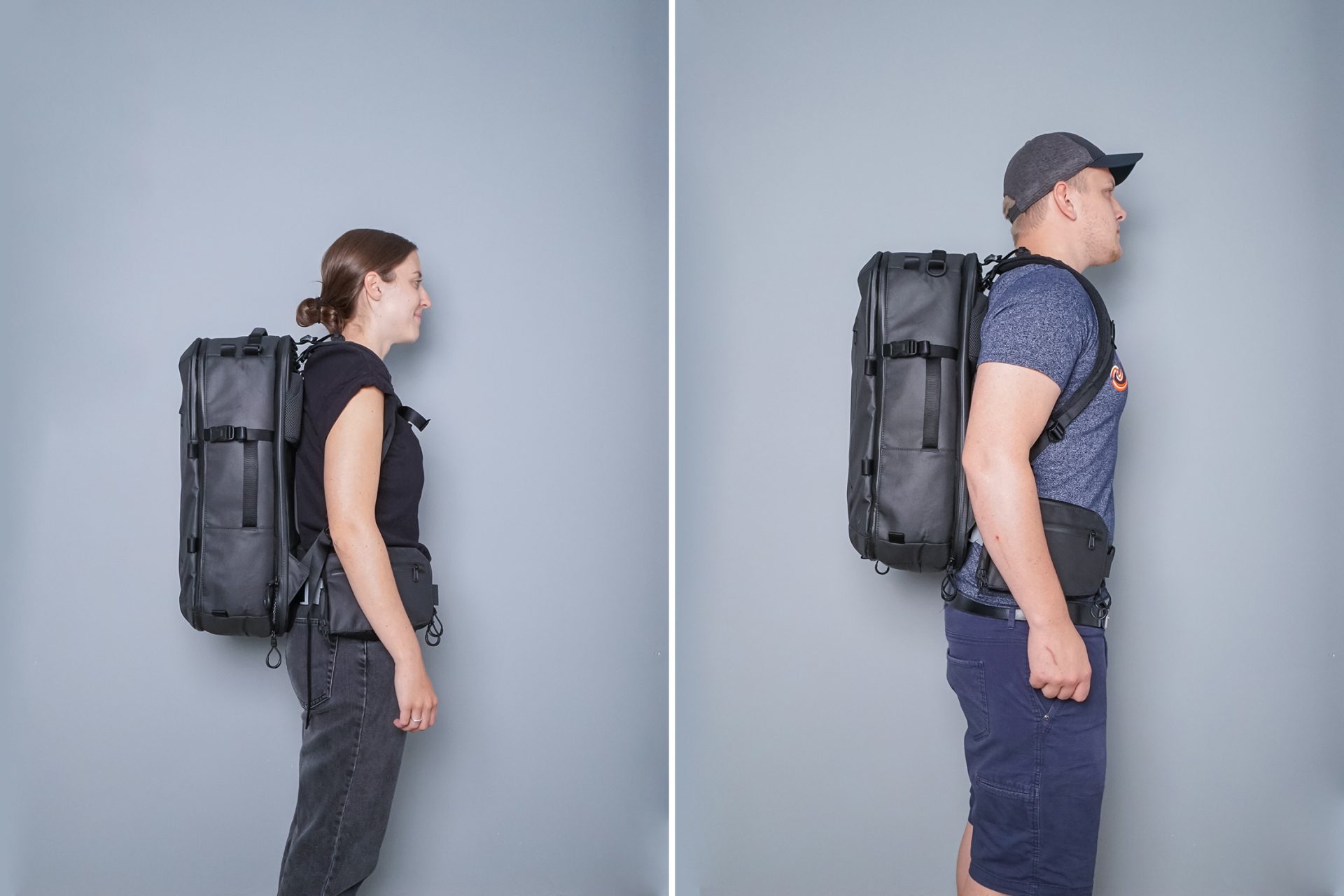

We’ll start off with the Carry-On and work our way down to the smallest member of the trio. The shoulder straps here are nothing short of beastly. The entire strap has mesh underneath, thickly padded, and lined with loops. The loops are for mounting the sternum strap, which, sadly, uses a pointy plastic anchor that’s pretty difficult to remove and reinsert. A considerable amount of effort is needed to thread it through a loop, and pushing in the pointy end can hurt your finger. Fortunately, we only had to do this a couple of times thus far before settling with our preferred sternum strap mounting height.
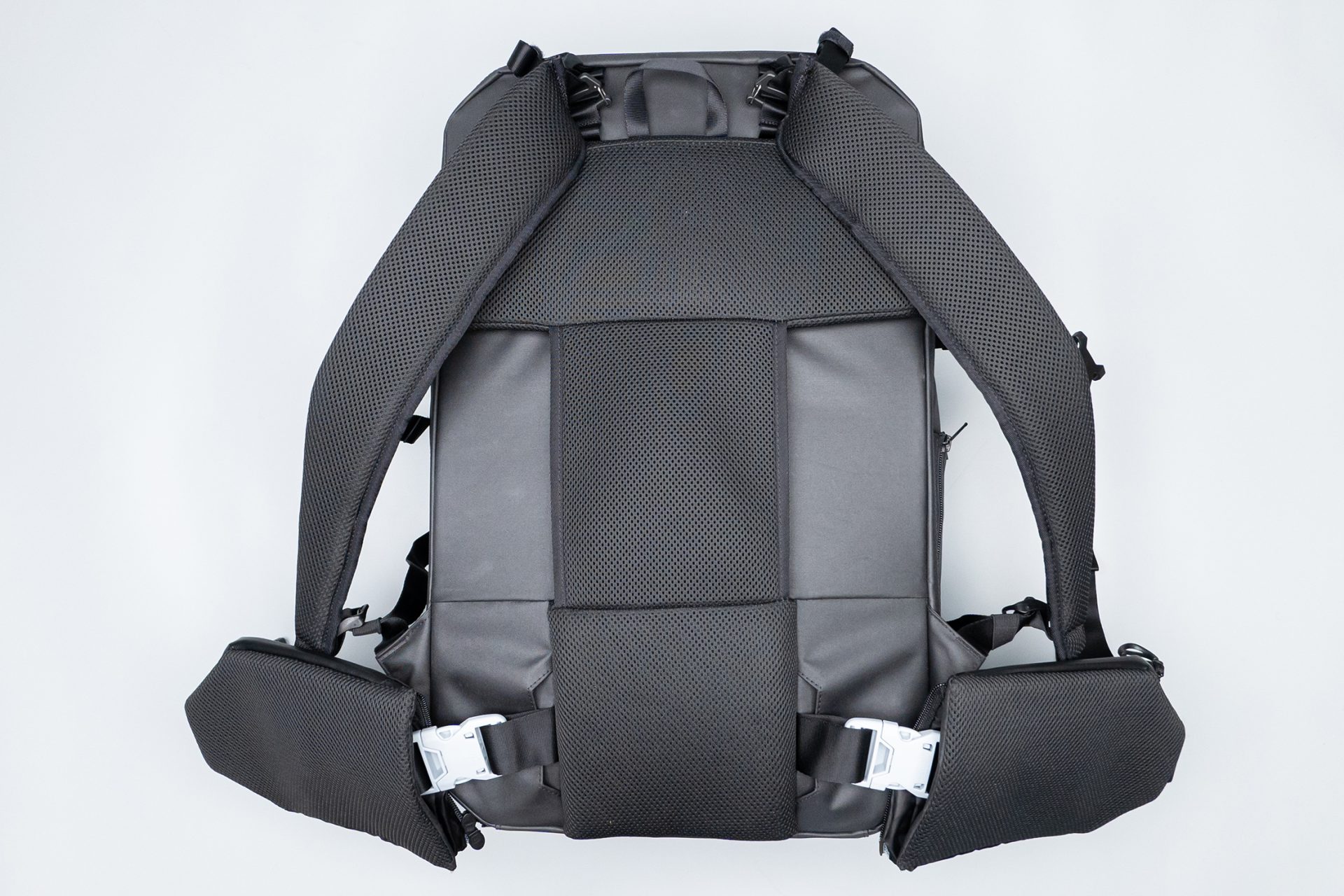

While wearing the Carry-On, we felt the shoulder straps dig in near the base of the neck. We think this is due to a combination of how wide the straps are and how small the wearer’s build is. It’s not unbearably comfortable, though, and it’s tolerable for trips to and from the airport.
Apart from the usual length adjustment, the shoulder straps also have load lifters to help keep the bag from sagging back too much. In addition, the shoulder straps themselves can adjust their vertical position. They’re partly secured by gatekeeper-style clips, which hook onto a series of loops near the top edge of the back panel. All in all, there’s a lot of room for adjustment here if you’re particularly sensitive to that.
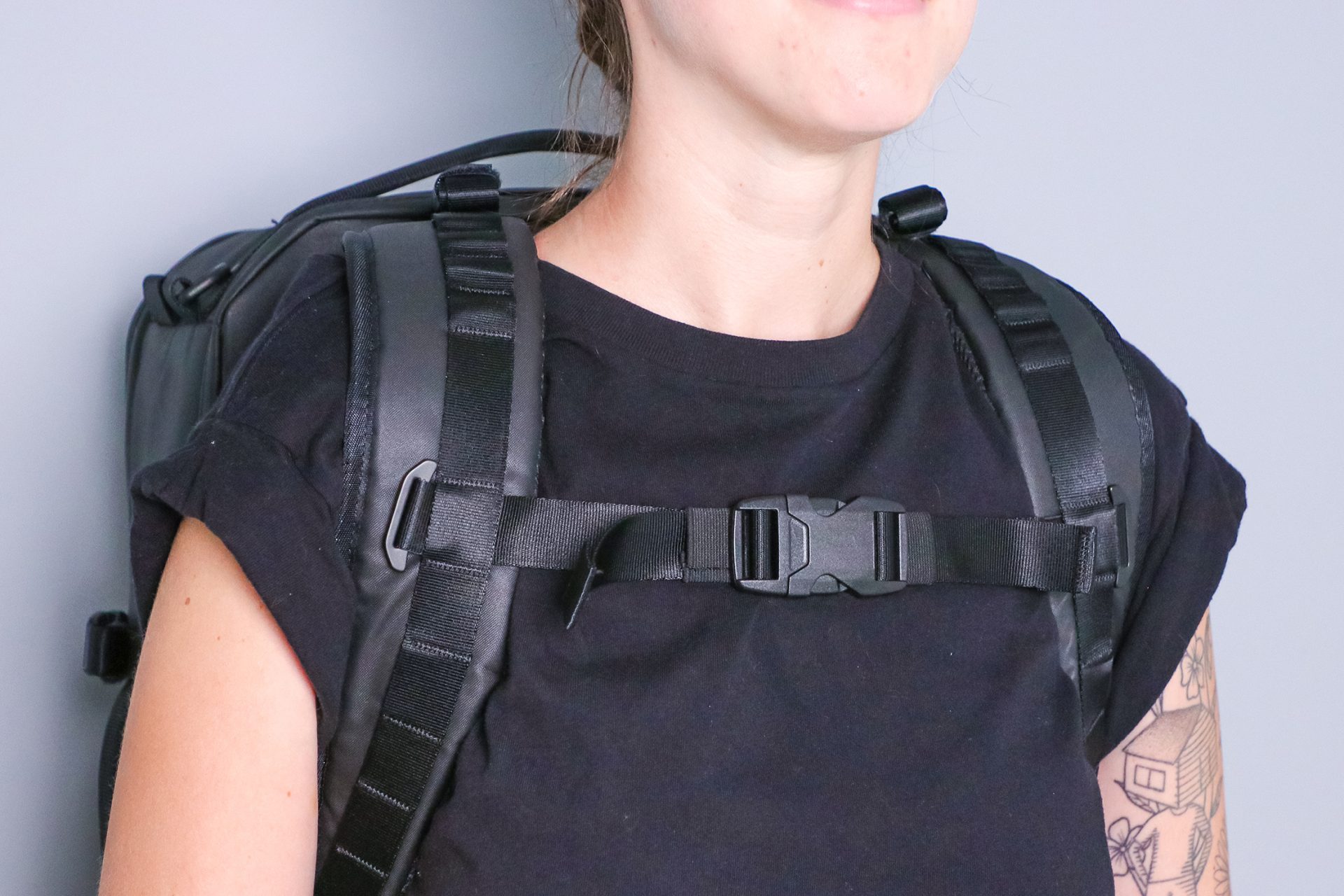

The back panel is pretty busy itself. The very thick and meshed foam panel is shaped like a large “T,” which supports the important areas along your spine and behind the shoulders well enough for a comfortable carrying experience. It also acts as a very wide and spacious luggage pass-through, one of the most spacious ones we’ve seen on a travel backpack. However, the relatively narrow channel towards the bottom can feel unbalanced from time to time, kind of like it’s teetering side to side along the small of your back.
We wish there was more padding along the bottom portion to even it out, but a pair of buckles flanking the foam channel already occupies that area. These white buckles are used for attaching the Sling Belt, and they’re fairly beefy too. Stuffing these buckles into the fabric can be tricky, as with the sternum strap’s anchors. Thankfully, because of how thick the foam channel is, you won’t feel these buckles jut out into your lower back despite how large they are.
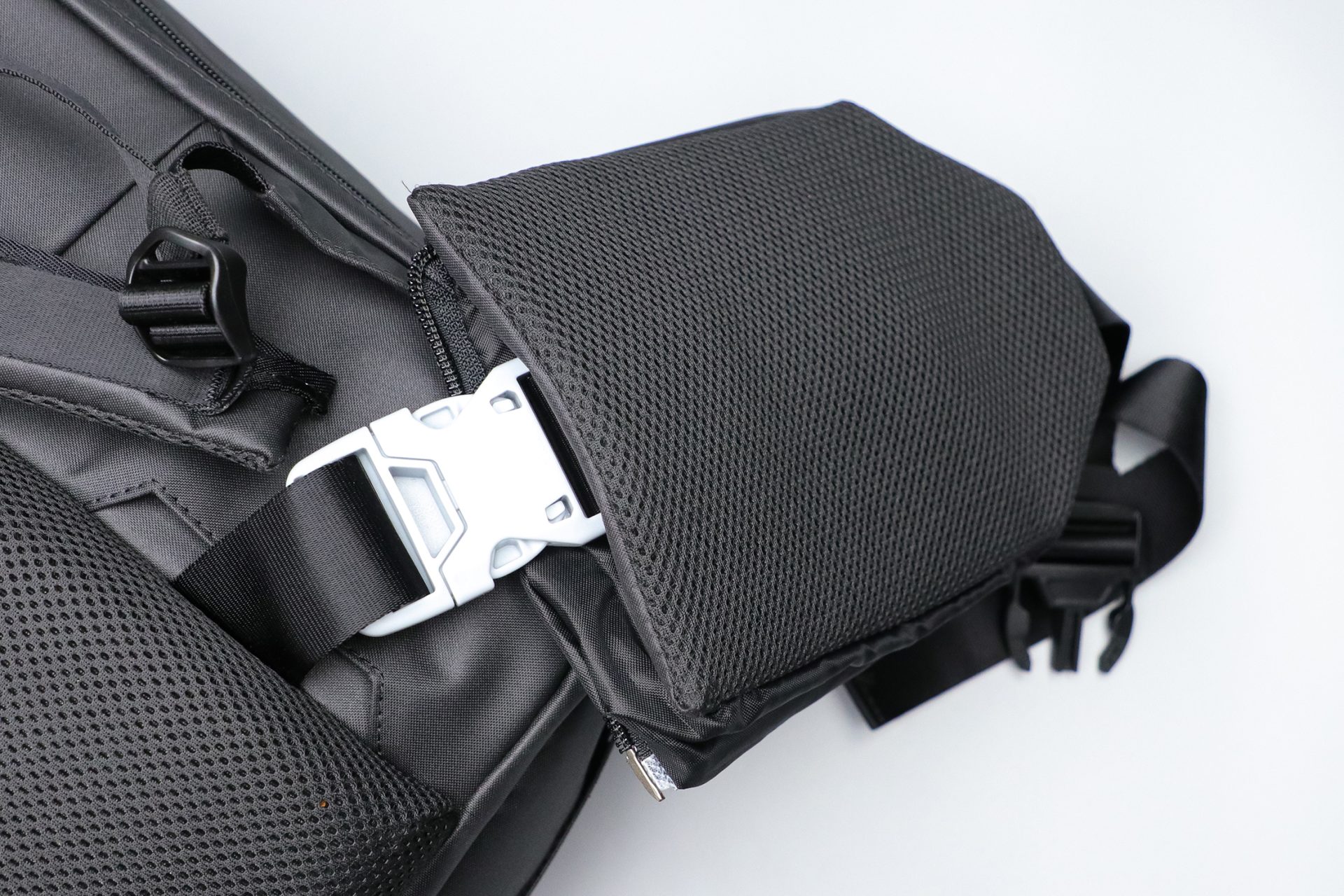

At the front of the Carry-On is a total of eight loops, two on each of the four sides. Optional accessory straps can hook onto these via G-hooks for extra compression. However, the loops’ primary purpose is to mount the Day Bag directly in front of the Carry-On.
On the right side of the Carry-On is a simple nylon handle for quickly grabbing and moving the bag across short distances. Even the strongest arms within the Pack Hacker team don’t consider this handle viable for long-term carrying the hefty backpack. There’s also a built-in compression strap here with a side-release buckle to keep things tight and stable, with a matching one on the left side as well. While we appreciate the inclusion of these compression straps—and they do work—we preferred using the optional accessory straps that we had on hand.


Instead of another side handle here on the left side, there’s a fold-flat water bottle pocket that’s kept low-profile by a zipper. Undo the zipper, and the mesh material stretches to accommodate even a 40-ounce bottle.
Next up is the Day Bag. The well-padded shoulder straps can be stowed away behind its back panel. While stowed away, they do bulge noticeably, making for a somewhat messy look. The shoulder straps have G-hooks at the bottom, and you use them to secure the straps in place for backpack mode. There are also G-hooks at the top of the straps, but we’ll get into their use later. At the bottom, however, is where we first felt a bit unsure of how secure these G-hooks are. The large gap of the G-hook’s opening combined with the right amount of unfortunate wiggling can result in it coming off of the attachment point. This isn’t an issue once we’re wearing it and there’s sufficient tension on the straps. However, picking it up from a slacked state may result in an undone shoulder strap.
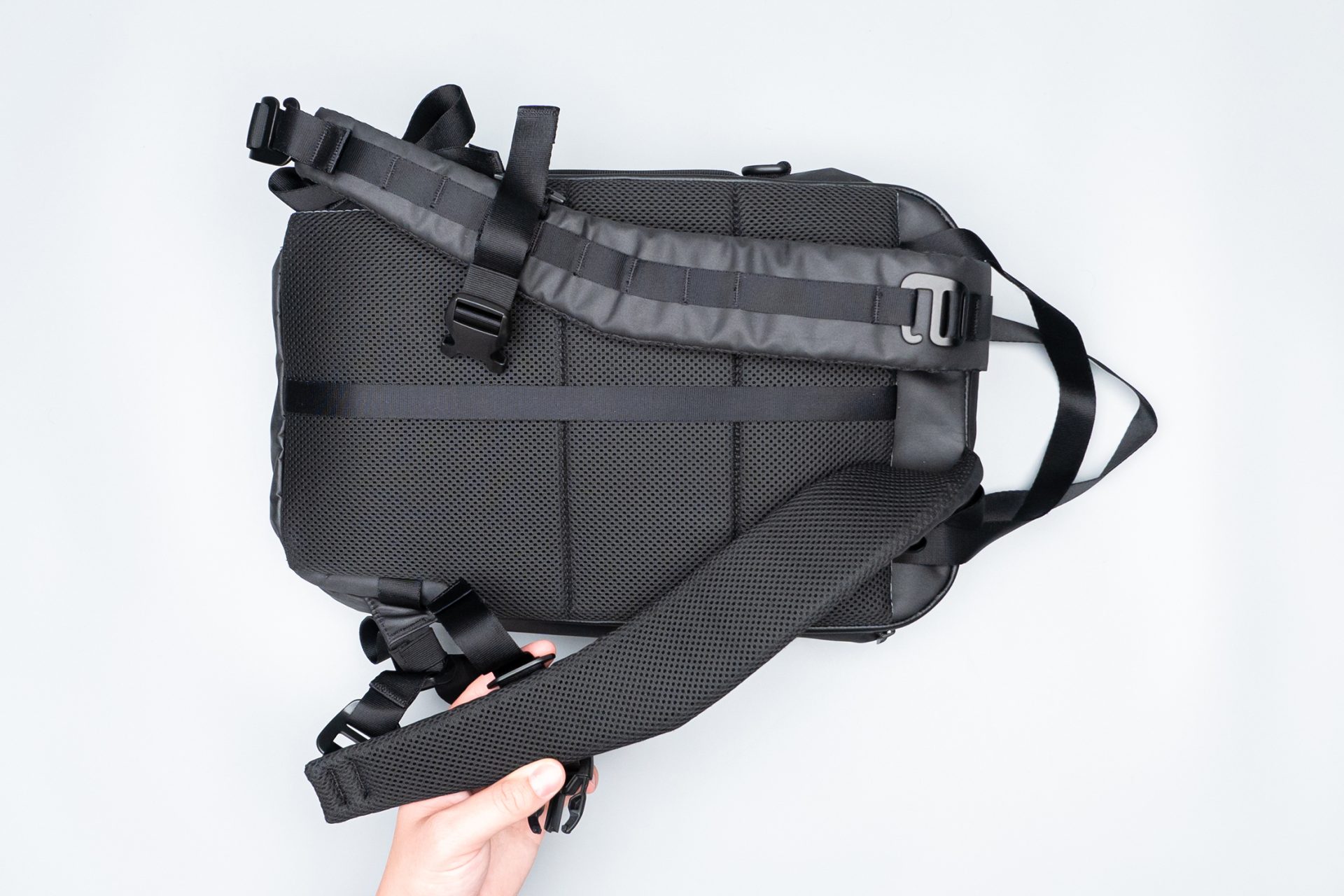

Unfortunately, the Day Bag also uses the same sternum strap mounting system the Carry-On does. Additionally, it’s actually a bit more difficult to re-adjust here because the loops are much tighter, thus requiring more fiddling and pushing to thread through the pointy plastic anchor.
The back panel is also fully meshed and padded like the shoulder straps, and it wears comfortably. To top it off, the back panel also has a nylon strap that acts as a luggage pass-through. There’s also a built-in waist belt, despite the bag’s relatively small capacity at 11-liters. The strap stows away behind the back panel alongside the G-hooks that anchor the shoulder straps in place. We mostly left the waist belt unused, but we did find it useful when we took the Day Bag on a bike ride.
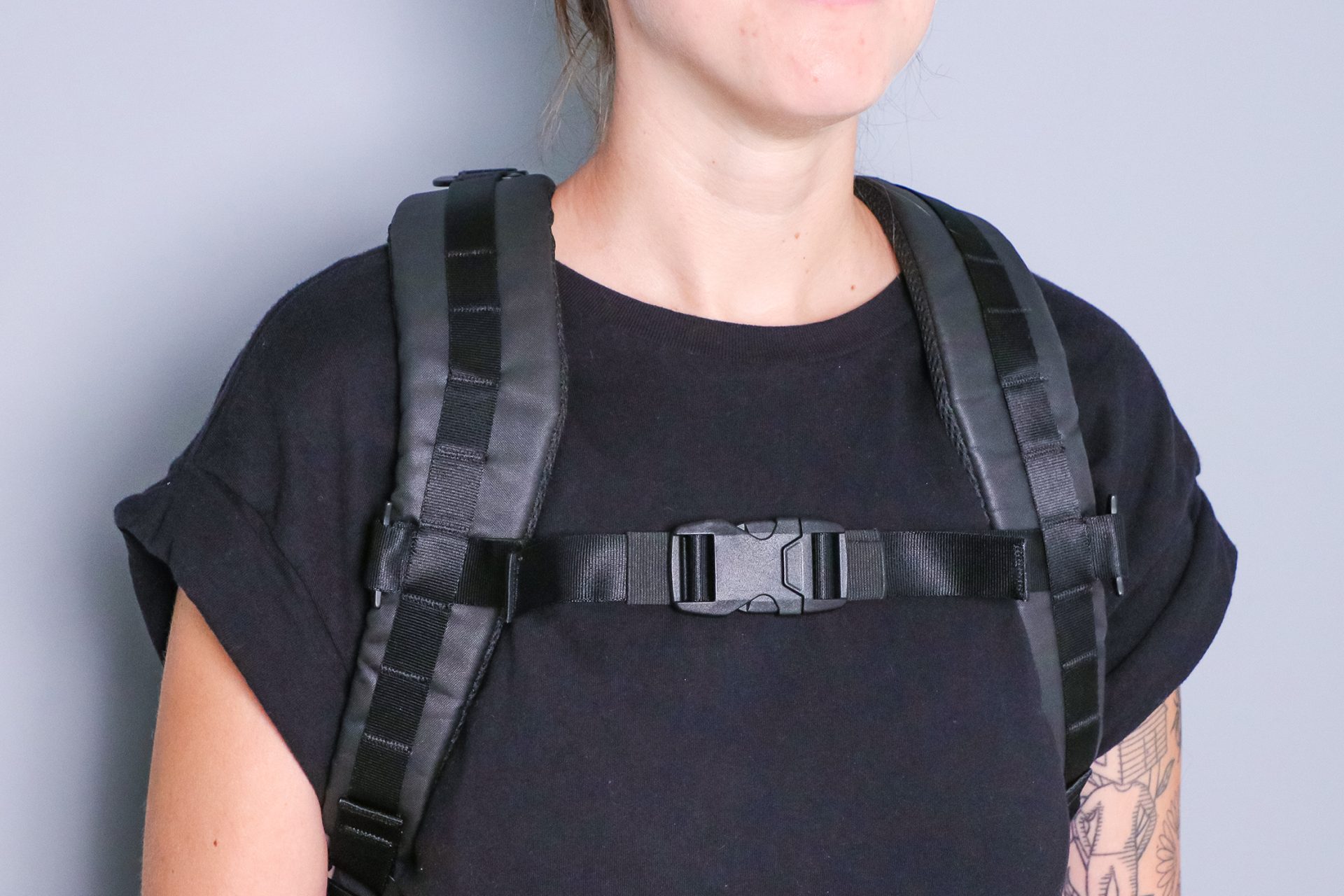

Apart from the shoulder straps, the Day Bag can also be carried tote-style. Inside the back panel and the front pocket is a tote handle for carrying by hand. In addition, there’s also a right-side handle for brief-style carrying, with a nice bonus D-ring for a handy accessory.
Lastly, the Sling Belt’s harness system is much simpler compared to the other two. It’s a simple nylon strap, which also acts as the waist strap of the Carry-On. As a clever bonus, the release buckle for this removable waist strap also doubles as a quick-release buckle for when it’s in sling mode.
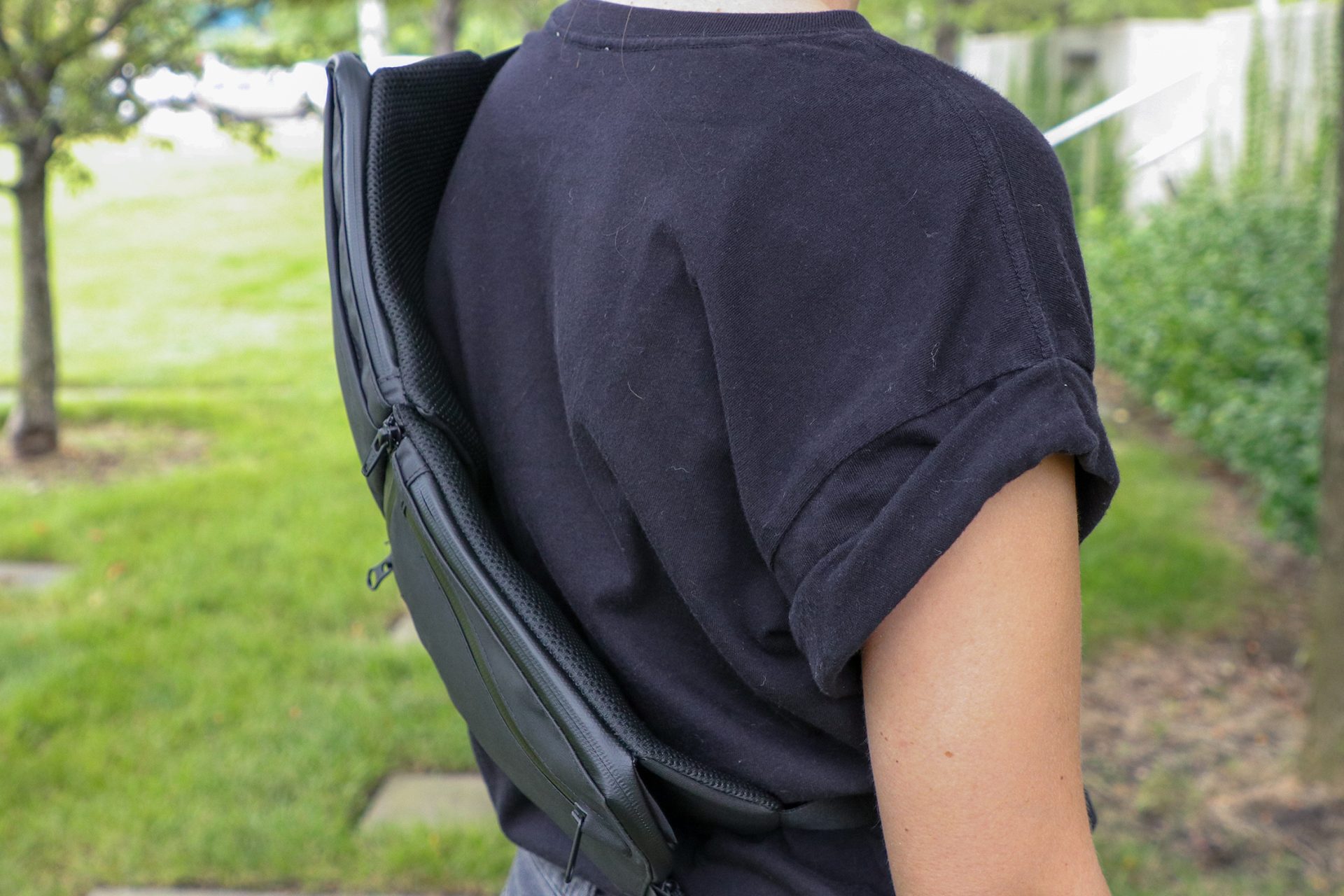

The Sling Bag’s back panel is also comfortably padded and meshed for breathability. Despite having a mostly flat profile, it did have difficulty resting against our body, whether it was at the front or back. The back panel bends sharply near the ends instead of curving, so the sling doesn’t completely rest and contour against the body. Fortunately, the comfortable mesh material more than makes up for this.
Inside The Packs
We’ll start again with the Carry-On’s pockets and interior organization. Starting us off is the front pocket, guarded by a weather-resistant zipper, complete with a zipper garage. The space inside is plentiful, with enough room to throw in your smartphone and wallet in case you don’t feel like carrying them around yourself.
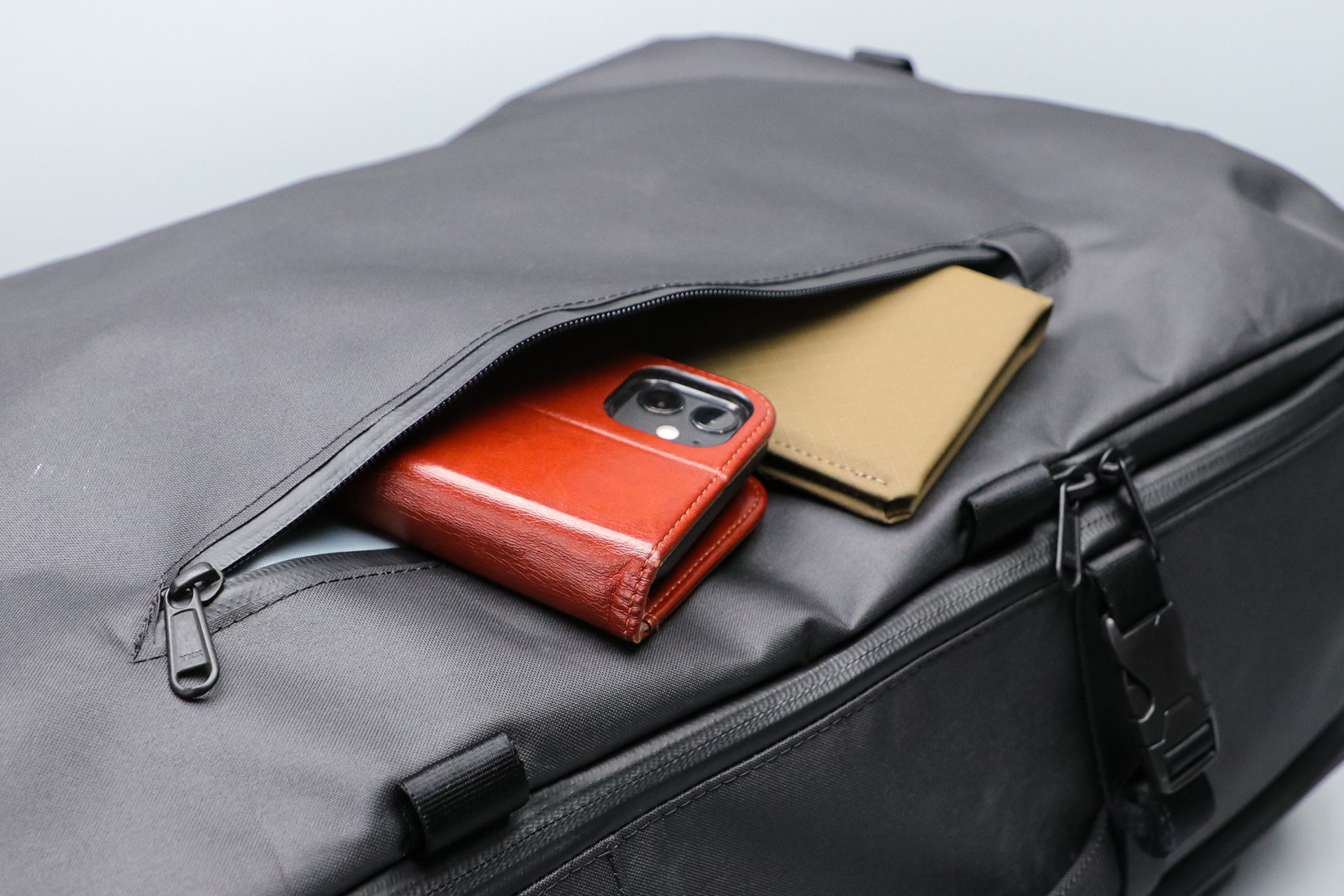

Behind the front pocket is a larger front compartment that opens horseshoe-style. This is where the Day Bag slots into, and there’s enough room in the rear sleeve for a toiletry bag and/or pouch. Of course, if the Day Bag isn’t in here, it would also make for a decent document compartment with enough space for thick binders or a jacket.
There’s also a top pocket, though this one’s shrouded by fabric for better security and weather protection. Accessibility isn’t too good, and it feels a bit tight, mostly suited for slim items like passports and compact wallets. At the bottom, the Carry-On also gets a dedicated rainfly compartment. Unfortunately, the rainfly itself is an optional extra available as a separate purchase, and though Gravel doesn’t have their own at the time of writing this review, they say that they plan to sell one in the future.


Around the back is a tech compartment that opens clamshell-style. The 16-inch laptop sleeve is well-padded with a loop and hook fastener to hold the laptop firmly in place. Just above is a zippered opening, providing access to the frame sheet, which is a nice maintenance feature.
Opposite the laptop sleeve is a large mesh pocket where we are able to fit our Apple Magic Keyboard. The mesh pocket is wide enough for bundles of cables and accessories. But for smaller items like dongles, the smaller mesh and zipper pockets above are much more suitable.
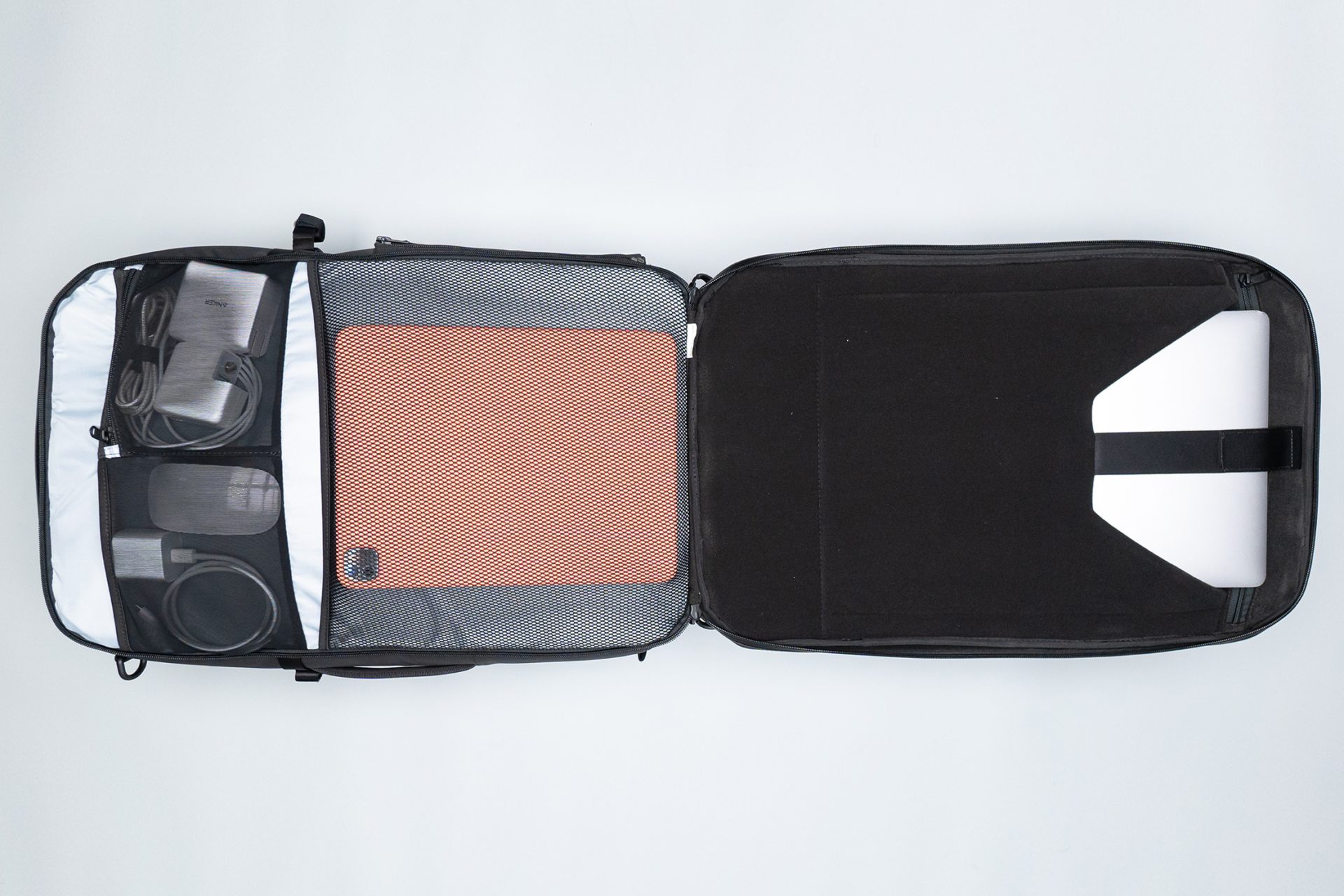

Last but certainly not least for the Carry-On is the main compartment. It’s a fully-clamshell opening, allowing for completely unimpeded access to all the available space inside. The sides have a decent structure and are lined with felt material, allowing dividers to be installed using hook-side fasteners.
Right out of the box, one long and one short divider is provided to play around with, and extra ones are available as separate purchases. Getting the dividers positioned exactly right is a bit challenging because the hook-side patches catch onto the felt material rather easily, so some precision is required. Also worth noting is because of the “T” shaped foam channel of the back panel, the floor of the main compartment bows down at the sides, creating gaps underneath dividers placed along those areas. A loose sock or button may sneak its way around through those gaps, so it’s worth looking out for in case you value the complete separation of items.
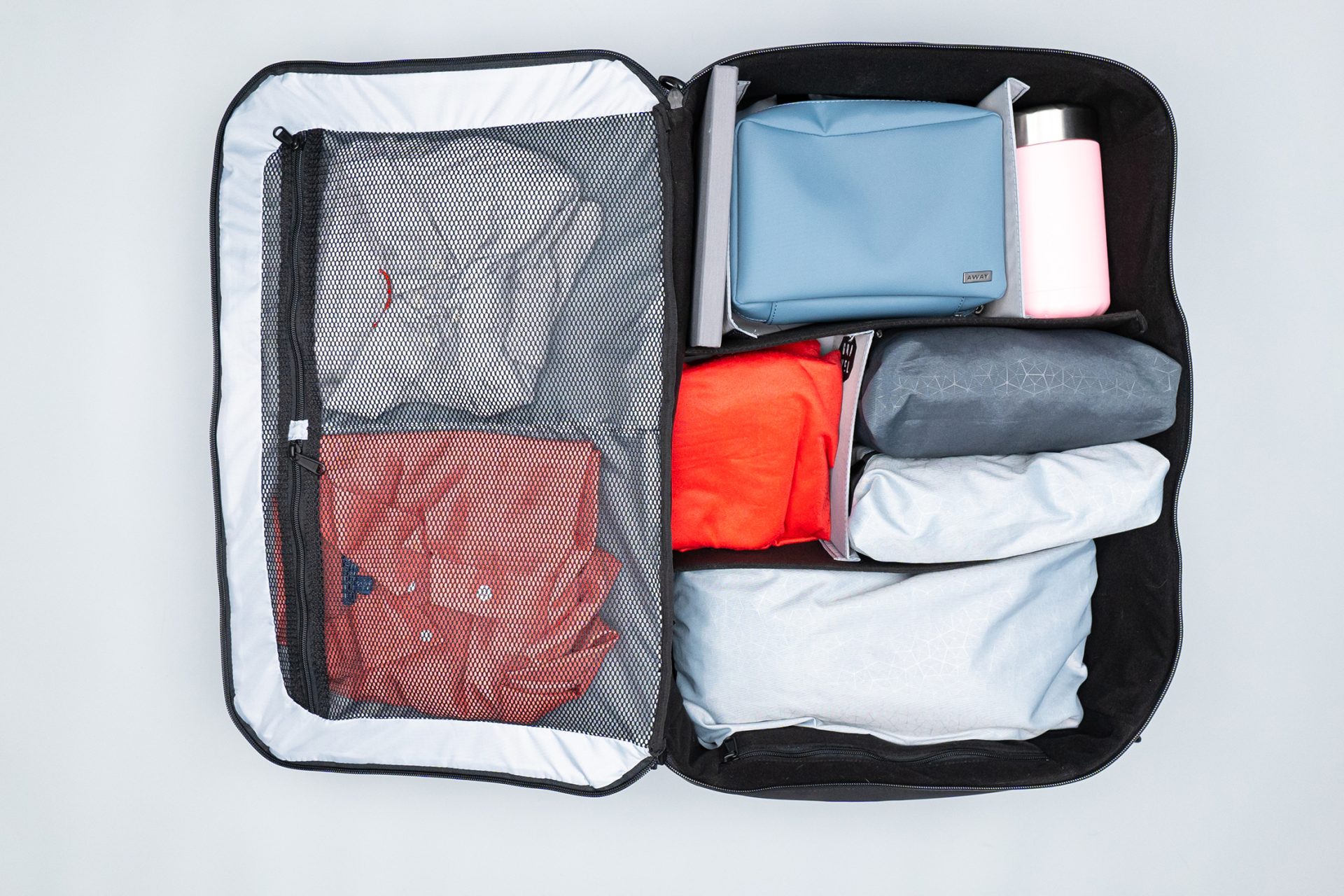

To really lock clothes and items down, there are also loops around the sides of the main compartment. There are five each on the left and right sides, then two on each of the top and bottom sides. These take the same optional accessory straps we use at the front for compression. We’ll leave it to you whether that’s a worthwhile investment or not. Despite our doubts about how secure the G-hooks are, we will say that they are effective if you tighten them down properly.
There’s also a dedicated laundry bag compartment at the bottom side. Much like the rainfly compartment on the outside directly against it, the laundry bag that goes inside is a separate purchase. Without these separate purchases, there’s always the option to repurpose these pockets as hidden pockets—the choice is yours.
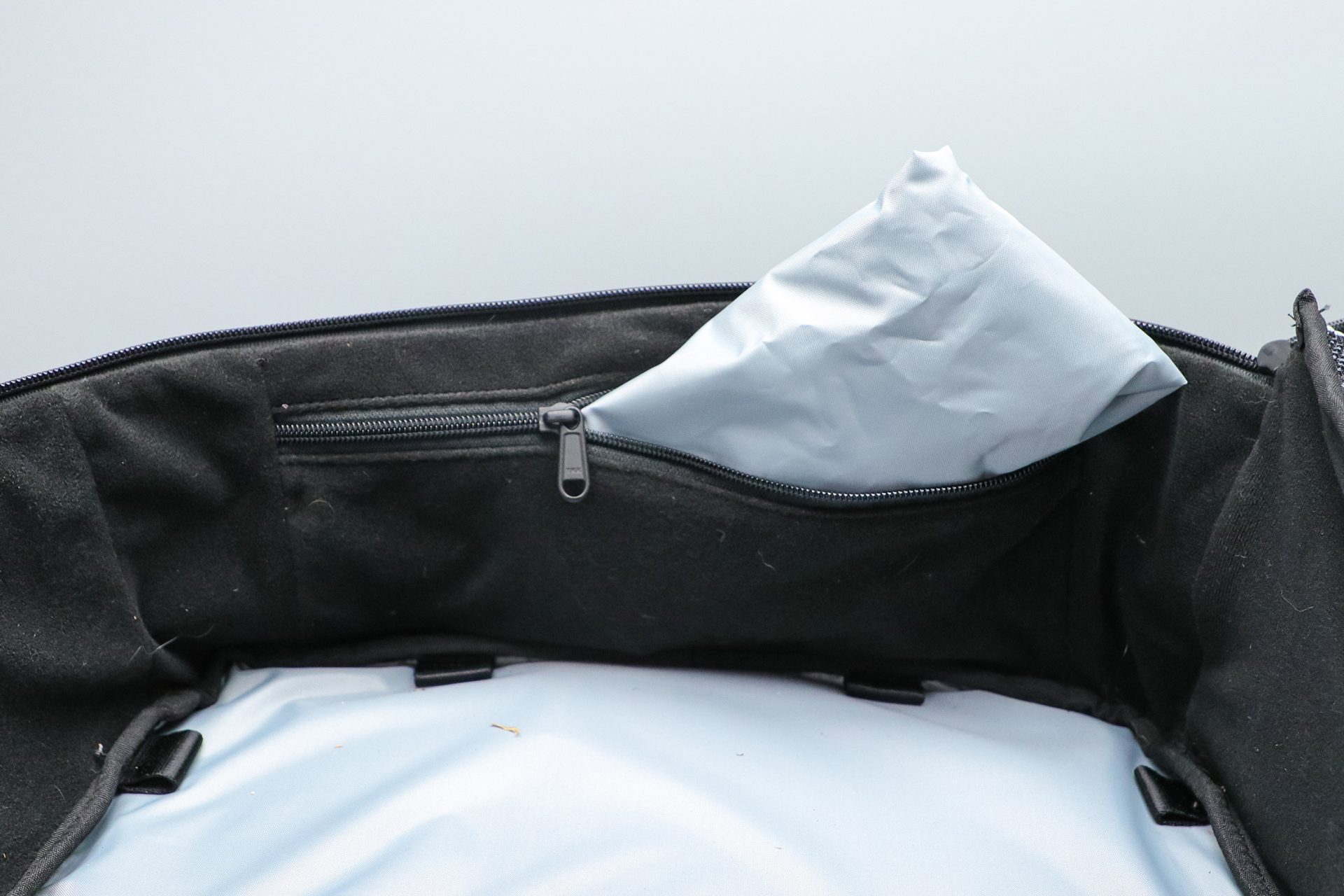

As for the Day Bag, there’s the front tote handle pocket in which one of the handles stows away. It features a weather-resistant zipper for protection if you decide to store things inside, but we opted for flatter items like documents since bulky gear can impact the shape of the bag. In contrast, the vertical front pocket has a similar weather-resistant YKK zipper arrangement as with the Carry-On. However, the space and opening are much smaller, and while a standard-issue passport fits inside, there isn’t enough room for a bulkier passport wallet. It’s also a great spot for a phone or low-profile wallet.
There’s also a top pocket for quick-grab items, and it’s equipped with two liner pockets inside, plus two smaller ones on the left side. It’s not the most diverse set of pockets for internal organization, but it totally works for a simple quick-grab pocket.
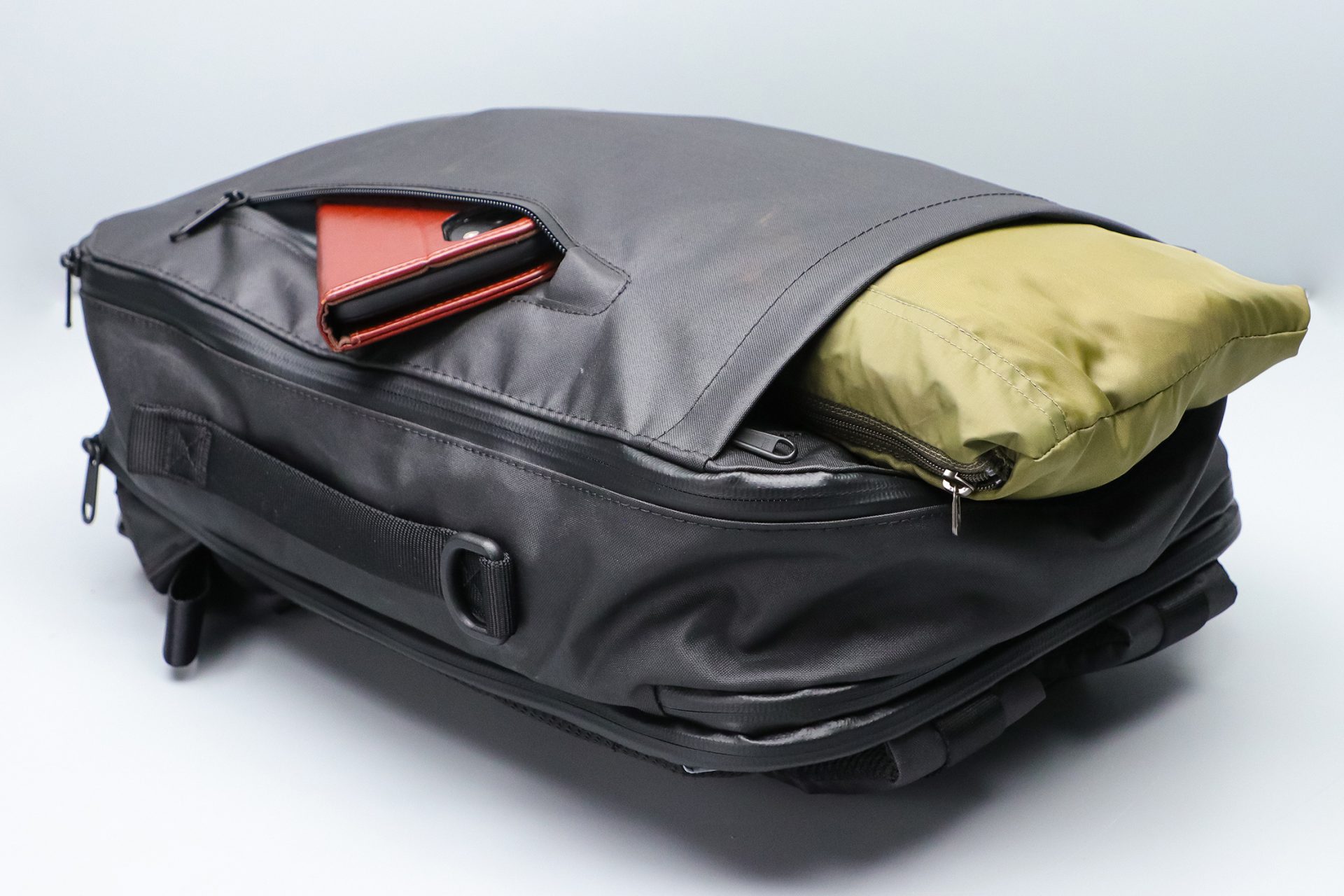

Following the template of the larger Carry-On, the Day Bag has a similar rear tech compartment. It also opens fully clamshell-style, with a 16-inch laptop sleeve and a similar layout of pockets. The only key differences are that the laptop sleeve isn’t as well-padded at the front, the wide mesh pocket is now zippered, there’s no access to the frame sheet, and of course, everything is smaller.
The Day Bag also features a fully clamshell main compartment. We’re more used to seeing horseshoe-style openings on daypacks such as this since they offer a balance between a wide enough opening and not fully unraveling the entire interior. Fortunately, there are two zippers to work with, so you can have as wide or as small of an opening as you want.
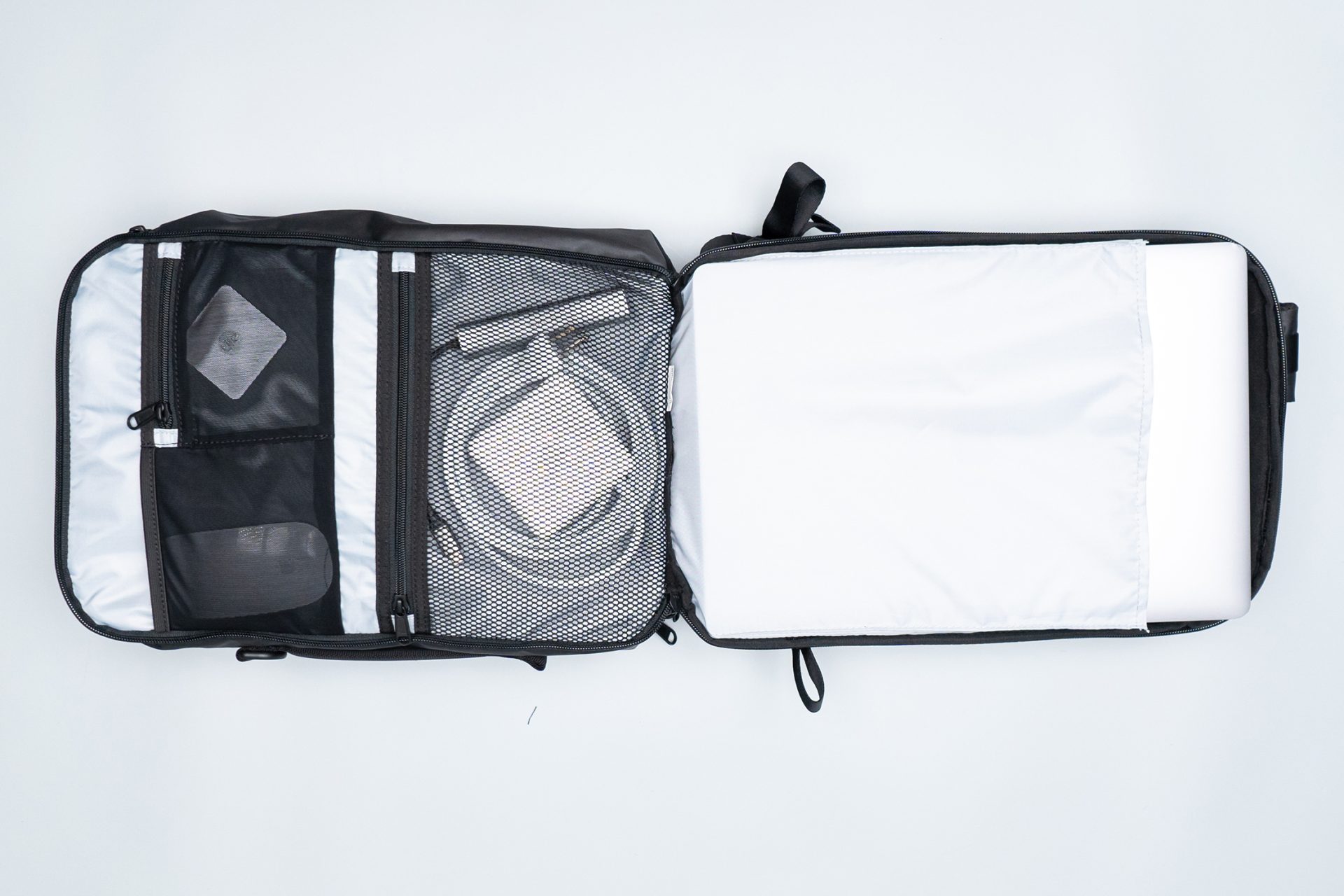

The interior layout is a miniaturized version of what’s on the Carry-On, with two loops on each side for a total of four for attaching accessory straps. The edges are also lined with felt for mounting dividers. However, the smaller Day Bag needs its own set of dividers as the dividers for the Carry-On are too large. One long divider is already included out of the box.
Apart from travel bag-like organization, the Day Bag also has an internal water bottle pocket able to fit a substantial 32-oz bottle. Like the Carry-On’s water bottle pocket, this one also folds flat using a zipper. Lastly, there are no mesh pockets here like on the Carry-On, but there’s a shallow sleeve at the back for flip-flops or anything that needs to be separated.
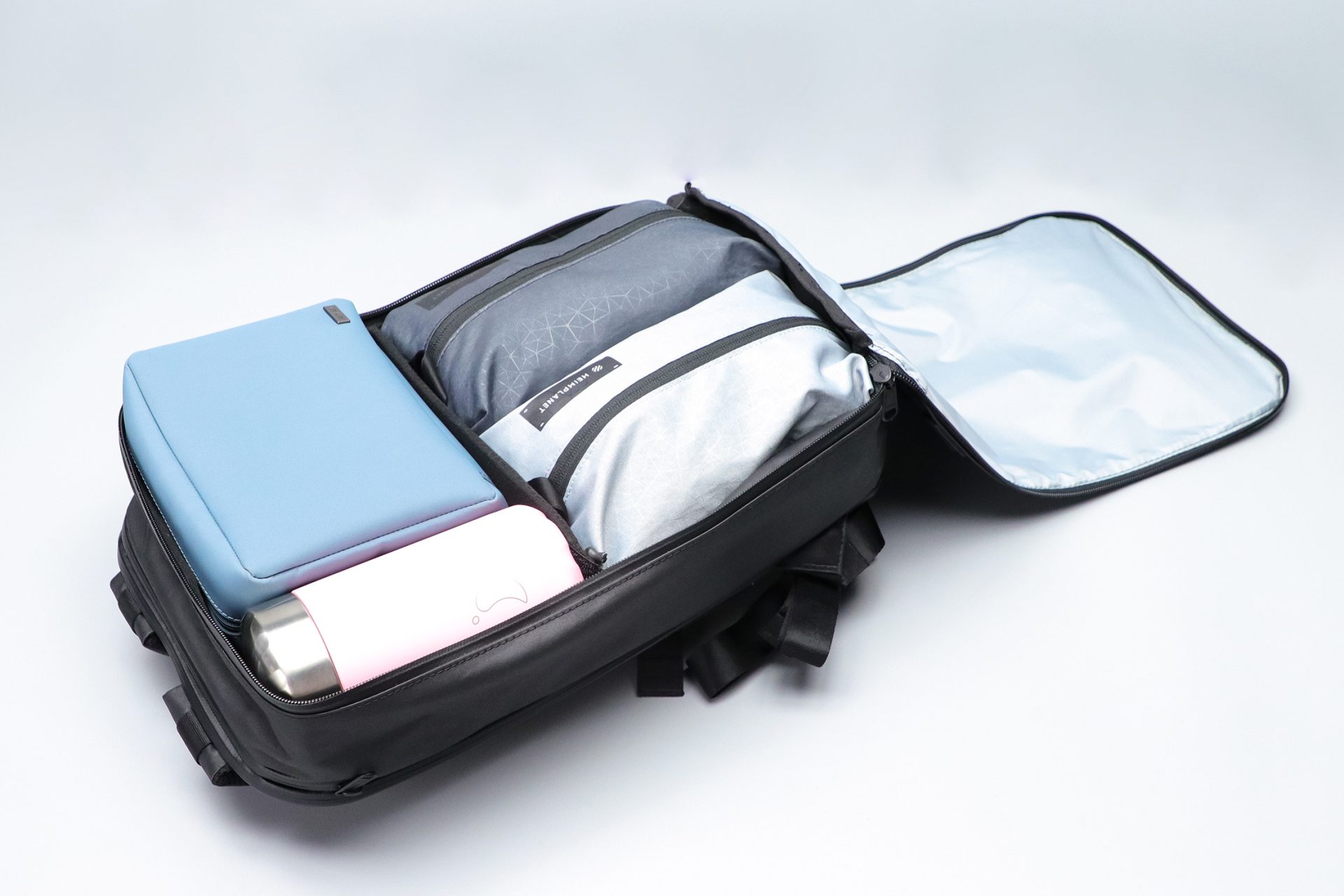

Finally, we’ve reached the Sling Belt, and it’s not poorly equipped in terms of pockets and organization, even though it functions as a support for the Carry-On.
As mentioned earlier, the sling splits into two parts, each with a front pocket that is very similar to the other. The only difference between them is their openings. The right pocket has a gusseted opening, while the left one gets a weather-resistant zipper with a garage at the end. Both styles have their merits, plus the different openings help us remember which pocket has what items. The space is enough for spare change, tickets, hand sanitizer, and other everyday carry items, but anything too bulky will impact the flat shape.


There are also two main compartments because of the split design. The openings zip from the top and down towards the sides in a sort of semi horseshoe-style opening. There’s a decent amount of space inside for large-capacity power banks, sunglasses cases, wallets, and smartphones.
Carry and Usage
It’s important to see how it all comes together because of how many moving parts the Backpack Travel System has. On each of their own, the Carry-On, Day Bag, and Sling Belt carry comfortably enough. However, putting two or all three together is a different experience altogether.


Starting with the basics, the Sling Belt splits in two via a zipper down the middle of the two pouches. The white buckles on the rear side with the mesh padding attach to the corresponding ones tucked inside the Carry-On’s back panel. The pouches effectively hug your sides while keeping the pockets of the Sling Belt easily accessible. When not in use, the entire Sling Belt can be stored in the Carry-On’s front compartment, alongside the day Bag.
One thing to note, however, is that it does rest pretty far off to either side of your hip, so getting into the pockets can be a bit awkward. Also, since the Sling Belt attaches to the Carry-On at the back panel, you may want to consider taking it off before boarding a plane to avoid any awkward shuffling when you get to your seat. On the plus side, the Sling Belt can buckle around your tray table, which makes it a handy personal item.
The Day Bag has a set of four G-hooks, two on each shoulder strap, one at the top and one at the bottom. These each attach to the daisy chains of loops on the Carry-On’s shoulder straps so that the Carry-On is on your back while the Day Bag hangs in front of you. Alternatively, the Day Bag hooks also attach to the loops on the Carry-On’s front (the ones that we use to attach the compression straps, as we talked about earlier). The attachment feels fairly secure, provided that the Day Bag’s weight puts enough tension on the G-hooks.


We found that the most balanced way to carry the entire system at once is to have the Day Bag attached on the Carry-On’s shoulder strap (i.e., at front-mounted). This way, the load is more distributed. However, it is quite tricky to self-mount the Day Bag’s four G-hooks—not impossible, but tricky nonetheless. As a side note, having a friend help out speeds up the process.
Hooking up the Day Bag to the Carry-On’s front adds noticeable weight and bulk behind us. It sticks out quite a bit, and we felt slightly conscious about accidentally bumping into someone behind us. It’s sort of like trying to tow something with your car; the first time’s definitely different from the usual.


The Backpack Travel System is one of the most comprehensive packages we’ve tried out. It’s effectively three bags that attach to each other. The integration does feel a bit clunky in areas such as how the Day Bag attaches to the Carry-On. It can also feel somewhat overkill for a lot of trips where bringing a packable bag or day sling is enough to complement a travel bag. It’s an all-in-one system, and for those looking for a one-stop deal, this one has many features worth checking out.
Junyuan BagsTen articles before and after
Knack Medium Expandable Pack (Series 2) Review | Junyuan Bags | Professional Bag Manufacturer
The Ridge Classic Backpack Review | Junyuan Bags | Professional Bag Manufacturer
GUM Travel Toothbrush Review | Junyuan Bags | Professional Bag Manufacturer
Samsonite Xenon 3.0 Large Backpack Review | Junyuan Bags | Professional Bag Manufacturer
Bellroy Lite Daypack Review | Junyuan Bags | Professional Bag Manufacturer
QWSTION Day Tote Review | Junyuan Bags | Professional Bag Manufacturer
VELCRO Brand Cable Ties Review | Junyuan Bags | Professional Bag Manufacturer
Matador Ultralight Travel Towel Review | Junyuan Bags | Professional Bag Manufacturer
Aer Dopp Kit 2 Review | Junyuan Bags | Professional Bag Manufacturer
The North Face Base Camp Voyager 32L Review | Junyuan Bags | Professional Bag Manufacturer




 Mobile/What's App/Wechat
Mobile/What's App/Wechat E-Mail
E-Mail ADD
ADD




